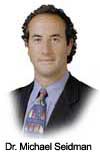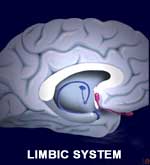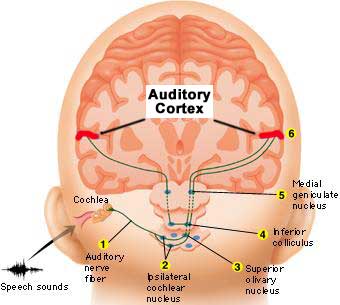By Barry Keate
Barry Keate, has lived with tinnitus over 40 years and has published 150+ research articles on numerous aspects of tinnitus. He is an expert on the condition and a well-known advocate for those with tinnitus.
Electrical stimulation has been used by neurosurgeons to treat various conditions for many years. Early experiments using DC current applied directly to the ear or mastoid bone showed promise in reducing tinnitus symptoms. Implanted electrodes used to control muscle spasms in Parkinson’s disease patients were found to reduce the sound of tinnitus, even though they were not implanted in the auditory cortex, where hearing occurs. Later developments included cochlear implants, which were originally designed to restore hearing to profoundly deaf people. It was discovered these implants also reduced tinnitus due to hearing loss. A prior article discussing the early history of electrical stimulation can be found in our Tinnitus Library.
 In a revolutionary series of experimental surgeries, Michael Seidman, MD, and his team have now shown that an electrode array implanted directly into the auditory cortex area of the brain can control tinnitus levels. The experiments are ongoing, however, all participants have been chosen and the study is closed.
In a revolutionary series of experimental surgeries, Michael Seidman, MD, and his team have now shown that an electrode array implanted directly into the auditory cortex area of the brain can control tinnitus levels. The experiments are ongoing, however, all participants have been chosen and the study is closed.
Author’s Note: This procedure is still very early in the discovery process and is not available as a treatment option. It will be several years before this surgery will become a routine treatment. Please do not inquire about becoming part of these experiments, as the clinical trials are closed.
A paper detailing the first two surgeries was published in the journal Laryngoscope, vol. 118 in March, 2008 with the title Direct Electrical Stimulation of Heschl’s Gyrus for Tinnitus Treatment by Michael D. Seidman, MD, et. al.
Dr. Seidman begins by noting that tinnitus affects 50 million Americans and more than 300 million people worldwide. In the US, more than 12 million people annually seek a physician’s help and 3 to 4 million of these are debilitated by their condition. Although no cure for tinnitus exists, there are many treatments, including drug therapy, masking techniques, Tinnitus Retraining Therapy and herbal/vitamin/mineral therapies, such as Arches Tinnitus Formulas. Electrical stimulation of the skin near the ear, cochlea and brainstem has also provided some degree of tinnitus suppression.
Prior to operating on humans, Dr. Seidman first experimented on animals to examine whether electrical stimulation of the auditory cortex suppresses tinnitus-related neural hyperactivity and found it to be effective. This provided the rationale for continuing with human experiments. The first surgery was performed at the Henry Ford Health System in Detroit, MI and the second surgery was performed in Antwerp, Belgium.
Author’s note: Neural hyperactivity in the auditory cortex has long been associated with tinnitus. You can read more on this topic in our Tinnitus Library.
Pre-Op
Patients were selected according to whether they had severe unilateral or bilateral debilitating tinnitus and failed to respond to a minimum 3-month trial of accepted therapy including: dietary modification with elimination of caffeine, alcohol, simple sugars and salt; trial of medications or herbal therapies; masking or Tinnitus Retraining Therapy. They had to be in good health and able to tolerate an extensive evaluation.
 The patients were asked to complete a battery of self-assessment questionnaires and underwent an audiological assessment and psychoacoustic measurement. These determined the hearing levels at precise frequencies and pitch and loudness matching of their tinnitus.
The patients were asked to complete a battery of self-assessment questionnaires and underwent an audiological assessment and psychoacoustic measurement. These determined the hearing levels at precise frequencies and pitch and loudness matching of their tinnitus.
The patients then underwent Magnetic Resonance Imaging (MRI), Functional MRI (fMRI) and Magnetoencephalography (MEG). These imaging techniques allowed the researchers to pinpoint the exact area in the auditory cortex that was experiencing significant hyperactivity.
Surgery
Surgery was performed using a neuronavigational system uploaded with fMRI or MEG data. The skull was breached and electrodes were implanted in the opposing auditory cortex for the patient who had unilateral tinnitus and in the dominant ear of the patient who had bilateral tinnitus.
In patient one, primary cables were tunneled under the scalp and descended below the clavicle where they were connected to an implanted pulse generator. In patient two, the pulse generator was external.
Upon recovering from surgery, at the first post-operative visit, the selection of the electrical stimulating paradigm, or model, was decided for each patient. The paradigm is variable and likely be different for each patient. Different frequencies, voltages and pulse widths are tried for 60 seconds on and 60 seconds off. The effect was evaluated after 2 minutes. If there was no perceived reduction in the tinnitus, the parameters were changed. Once the paradigm was optimized to the patient, the electrode configuration was changed to drive the current to the most active site in the cortex. There are 4 electrodes in each array so exact locations can be optimized.
Each patient was followed at 1 week, 1 month, 3 months, 6 months and 12 months after surgery. During each visit the patients repeated the initial questionnaires. At 3 and 12 months, audiological assessment and psychoacoustic measures were also completed.
Results
Patient 1. RP is a 50 year-old male with a 2-year history of severe disabling bilateral tinnitus. Audiometry indicated normal hearing through 2,000 Hz sloping to a high-frequency sensorineural hearing loss (SNHL). A pitch match indicated the tinnitus was at 8,000 Hz in both ears. He rated his tinnitus 10/10 for loudness and 9/10 for pitch.
The cortical response to MEG imaging was stronger in the right ear so the right auditory cortex was implanted.
Initial stimulation resulted in the perception of an acute reduction in tinnitus! The electrode was turned on and off several times with the patient blinded to the presence or absence of stimulation. The tinnitus would return when the electrode was off for 30-60 seconds and would decrease significantly when the electrode was active. Adjustments were made to the stimulation paradigm and the best one was used.
For the first several months, RP described significant improvement but still experienced days when the tinnitus increased to 2/10. Three months after surgery he reported his tinnitus was essentially gone when the electrode was active and recurred only several days after turning the device off.
It is important to note that initially the effect was greater for the opposing ear but subsequently it had effectively eliminated the tinnitus in both ears.
Two years following the surgery, RP graded his tinnitus at 0 to 1/10. Audiometry indicated no change in his hearing or speech discrimination after surgery.
Patient 2. MV is a 40 year-old female who was involved in a motor vehicle accident with whiplash injury. She immediately suffered a left-side hearing deficit. Two years after the accident, a sudden left-sided tinnitus developed and was associated with short-lasting spells of vertigo. Multiple medical and masking treatments were unsuccessful in alleviating her tinnitus. Audiometry revealed a very high 80 dB sensorineural hearing loss on her left side. She graded her tinnitus intensity and distress at 10/10. Her tinnitus pitch was centered around 16,000 Hz.
High resolution MRI revealed a microvascular compression at the entrance of her spine into the brainstem. Seven years after she developed her tinnitus, a microvascular decompression was performed and resulted in successfully treating her vertigo but failed to reduce her tinnitus.
Four months later, MV underwent transcranial magnetic stimulation, which suppressed her tinnitus by 20-50% but did not last for any appreciable time. Using fMRI neuronavigation, a linear four-contact electrode array was implanted over the site of the auditory cortex. Several subsequent stimulation regimens applied over the succeeding 4 months failed to adequately diminish her tinnitus.
Four months after the original surgery, MV underwent further surgery to replace the four-contact electrode array with two two-contact arrays. By altering the stimulation paradigm, she eventually had a 30% to 35% reduction in her tinnitus. However at her 2-year follow-up examination, her tinnitus had returned to its original levels.
Discussion
Two patients underwent intracranial electrical stimulation of their auditory cortex in an attempt to reduce or eliminate tinnitus. In patient one, the suppression of tinnitus was near complete, whereas in the other, it was moderate and did not last. Whether this was due to the more longstanding nature of patient two’s tinnitus or to another reason is still unknown.
 Intracranial electrical stimulation has been widely used by neurosurgeons for years. The primary pitfall is determining which “structures” (areas of the brain) to target to minimize the perception of tinnitus. Preliminary animal data clearly suggests that auditory cortex stimulation can affect other downstream structures within the auditory pathway. Whether stimulation of the primary auditory cortex will have the greatest effect in alleviating the perception of tinnitus or whether stimulation of other structures, such as those within the limbic system, will have the greatest effect requires further study. Dr. Seidman is currently working on approval to stimulate limbic structures.
Intracranial electrical stimulation has been widely used by neurosurgeons for years. The primary pitfall is determining which “structures” (areas of the brain) to target to minimize the perception of tinnitus. Preliminary animal data clearly suggests that auditory cortex stimulation can affect other downstream structures within the auditory pathway. Whether stimulation of the primary auditory cortex will have the greatest effect in alleviating the perception of tinnitus or whether stimulation of other structures, such as those within the limbic system, will have the greatest effect requires further study. Dr. Seidman is currently working on approval to stimulate limbic structures.
Author’s Note: The limbic system is the part of the brain responsible for pleasure, emotions, sexual arousal and fear. It is known that the limbic system plays a major role in the annoyance and aggravation of tinnitus.
In many ways, this is similar to the early work of William House with cochlear implantation. Dr. House inserted an electrode in the cochlea and a perception of sound occurred in profoundly deaf people. It took many years of biomedical engineering to refine the speech and coding strategies to provide the highest quality sound perception and speech recognition to the patient.
It has been suggested that tinnitus can be affected through cortical and auditory pathway stimulation, provided that reorganization of auditory signals has not yet reached the ultimate phase of irreversibility. This implies that tinnitus should be treated as soon as possible, preferably within 5 years of onset.

